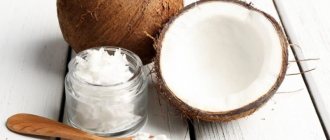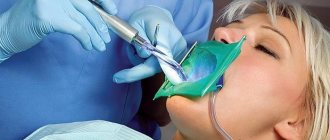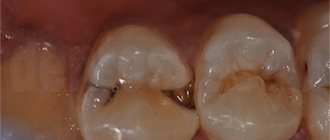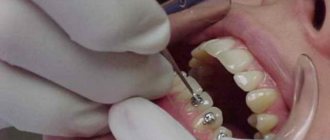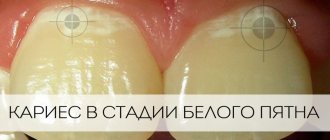Wellness
November 14, 2019
text: My Handbook
Oil pulling is an effective oral detox technique that has gained a lot of popularity these days. While not a replacement for routine teeth brushing, oil pulling for 10-20 minutes is considered an effective hygiene procedure that has a positive effect on the health of teeth and gums.
This practice became known from the classical Ayurvedic text Charaka Samhita, in which it is referred to as Kavala and Gandusha. It is claimed to treat about 30 systemic diseases: from headaches and migraines to diabetes and asthma. In India, oil pulling is considered a traditional folk remedy for strengthening teeth and jaws, and also helping to get rid of caries, throat and gum diseases.
Tatyana Korsakova has been practicing oil pulling in the morning for several years. A recent visit to the dentist confirmed that the oil pulling procedure has a noticeable therapeutic and hygienic effect. “The therapist was surprised at how good my teeth and gums were,” says Tatyana. “I advise everyone to implement this practice in their morning.”
Some of my favorite toothpaste recipes today:
Recipe for tooth powder with bentonite clay (with remineralizing effect)
Teeth whitening with activated carbon
DIY toothpaste and the benefits of saliva
How to make toothpaste from baking soda
The basic idea is that swishing oil around your mouth for a short time every day will help improve your oral health. As with oil cleansing, the principle of “like dissolves like” applies because oil can remove plaque and remove toxins without damaging teeth or gums. The practice of oil pulling (also called gundusha) began in India thousands of years ago, and according to my research, it was first introduced to the United States in the early 1990s by a physician named Dr. F. Karach, who used it with success in his medical practice.
Clinical researches
A study of the clinical effectiveness of therapeutic and prophylactic products of the Asepta line in the treatment of inflammatory periodontal diseases, carried out in the department of periodontology of the Central Research Institute of Dental Diseases and Maxillofacial Surgery of Rosmedtekhnologii (Moscow), revealed the high effectiveness of the Asepta gum balm and the Asepta mouth rinse for periodontitis. moderate severity. Asepta gum gel also turned out to be effective.
The use of Asepta mouth rinse turned out to be quite effective. In addition, no phenomena of mucosal irritation or brown staining of fillings were recorded. This indicates that the use of this rinse for a two-week period provides an obvious clinical effect in the absence of negative side effects.
Benefits of Oil Pulling
Oil pulling appears to be a practice with plenty of "anecdotal support" but a lack of extensive scientific research (although there is some...see below). Most sources agree that oil pulling is safe, but debate how effective it is. While more research is needed to determine any scientific support for oil pulling, I have personally noticed benefits, and dozens of readers also swear by its effectiveness. In fact, in my initial research, I found hundreds of reviews online from people who had benefited from oil pulling, including help with skin conditions, arthritis, asthma, headaches, hormone imbalances, infections, liver problems and more . Even though I've been doing this for several years, my only personal experience has been with improved oral health (no plaque) and less sensitive (and whiter!) teeth. I've heard several experts explain how bacteria and infections can enter the bloodstream through the mouth, it makes sense that treating these infections could have an impact on other parts of the body, I just haven't had personal experience with this. At the very least, I think oil pulling can be very beneficial and has no downside as long as the oil is good quality (good enough to eat) and it's done correctly. Oil pulling is a very inexpensive therapy that can potentially provide great oral health benefits, so I don't see any downside to trying it and I've used it myself for several years.
Consumer Reviews
SolAlena777 about Asepta Fresh mouth rinse (irecommend.ru)
“Recently, I have been hearing more and more positive reviews about ASEPTA products. So I decided to try something. The ASEPTA FRESH mouth rinse caught my eye...
...I liked the packaging design. Reminds me of a flask. As if the product had just been brought from a chemical laboratory...
...Active components contained in the rinse aid:
- Xylitol and potassium citrate protect tooth enamel and help reduce tooth sensitivity;
- Extracts of sage, chamomile and witch hazel have antimicrobial and anti-inflammatory effects
- Potassium and sodium pyrophosphates prevent the formation of tartar
- Lime and mint provide a pleasant taste and fresh breath
...I really liked that there was no vigor. The mouthwash reminds me of Schweppes carbonated drink, only without the gases and without as much sugar.
I use it 2 times a day, that is, in the morning and in the evening after brushing my teeth with toothpaste. I probably rinse my mouth for at least 20 seconds. To be honest, I try to keep the mouthwash in my mouth longer because I like the taste and I don’t experience any discomfort during use.
For me, a rinse aid is, first of all, protection against plaque throughout the day. I can note that the rinse aid copes with this with a bang. The feeling of clean, plaque-free teeth lasts throughout the day. Maybe this effect weakens a little in the evening, but I like the result...
...I was quite satisfied with the result. Most likely, I will buy ASEPTA FRESH mouth rinse again!”
Sources:
- Study of the clinical effectiveness of treatment and prophylactic agents of the Asepta line in the treatment of inflammatory periodontal diseases (A.I. Grudyanov, I.Yu. Aleksandrovskaya, V.Yu. Korzunina) A.I. GRUDYANOV, Doctor of Medical Sciences, Prof., Head of Department I.Yu. ALEXANDROVSKAYA, Ph.D. V.Yu. KORZUNINA, asp. Department of Periodontology, Central Research Institute of Dentistry and Maxillofacial Surgery, Rosmedtekhnologii, Moscow
- Report on determining/confirming the preventive properties of toothpaste “ASEPTA PLUS” GENTLE WHITENING” Author: doctor-researcher A.A. Leontyev, head Department of Preventive Dentistry, Doctor of Medical Sciences, Professor S.B. Ulitovsky First St. Petersburg State Medical University named after. acad. I.P. Pavlova, Department of Preventive Dentistry
- The role of anti-inflammatory rinse in the treatment of periodontal diseases (L.Yu. Orekhova, A.A. Leontyev, S.B. Ulitovsky) L.Yu. OREKHOVA, Doctor of Medical Sciences, Prof., Head of Department; A.A. LEONTIEV, dentist; S.B. ULITOVSKY, Doctor of Medical Sciences, Prof. Department of Therapeutic Dentistry of St. Petersburg State Medical University named after. acad. I. P. Pavlova
Oil pulling instructions
- Place 1-2 teaspoons of oil in your mouth. The oil traditionally used for oil pulling is organic sesame oil, and it is also the oil that is most studied for use in mouth rinsing. It is also possible to make oils with organic coconut oil or pre-mixed coconut oil "chews". Whichever oil you choose, place 1-2 teaspoons in your mouth. I also add a few drops of Brushing Blend (antibacterial, naturally) to the mixture.
- Recommended rinsing time is 20 minutes. Obviously, timing is key, according to Dr. Bruce Fife, author of Oil Pulling Therapy, as it's long enough to break through plaque and bacteria, but not long enough for the body to begin reabsorbing toxins and bacteria. The oil will be thick and milky as it mixes with saliva during this time, and it should be creamy white when spat out. It will also double in volume during this time due to saliva. It can be difficult to do this for a full 20 minutes at first, and I didn't have to stress if I just "got quiet" for 5-10 minutes when I first started.
- Spit the oil into the trash can. Especially if you have a septic system like I do...don't spit in the sink! The oil may thicken and clog the pipes. Don't swallow the oil as it is hopefully full of bacteria, toxins and pus that are not in your mouth now!
- Rinse your mouth well with warm water. Warm water seems to clean the mouth better (my opinion). I gargle with warm water several times to remove any remaining oil from my mouth. Some sources recommend rinsing with warm salt water.
- Clean it well. I prefer to brush to make sure any remaining bacteria is killed.
This can also be made with coconut oil, which is naturally antibacterial and has a milder flavor than other oils. Anyone with a sensitivity to coconut oil or coconut products should avoid using coconut oil in this manner. Sesame oil has been traditionally used in the Ayurvedic tradition and is another great option, just be sure to use organic sesame oil.
When will the effect appear?
The first improvements become noticeable after about two weeks: gum inflammation disappears, breath becomes fresh, teeth gradually become lighter.
Some people think that using coconut oil will help restore tooth enamel, but there is no scientific evidence to support this. The oil is not a source of minerals, but rather helps prevent the enamel from being destroyed. If you want to restore enamel, use the services of dentists or special remineralizing agents.
Is oil pulling safe?
Luckily, this is one point that all sources seem to agree on! Some sources claim that oil pulling does not have the benefits often attributed to it or that it does not actually remove toxins from the mouth, but they all agree that there should be no negative consequences. All of the oils that are commonly used are completely edible and considered healthy when consumed, so they are not problematic when consumed internally. The only potential danger I've seen is ingesting the oil after it has absorbed bacteria or toxins from the mouth. When I asked my own dentist about oil pulling, I was told that while the research lacks hard numbers, it can be considered an effective and safe alternative to mouthwash, and that it won't cause any harm.
Why choose coconut oil?
For such purposes, you can use a variety of oils, for example, lemon, tea tree, sesame or even sunflower oil. But coconut oil has a number of additional beneficial properties and a rather pleasant taste. This oil contains lauric acid, which has antimicrobial properties. The substance prevents the spread of viruses, pathogenic bacteria and fungi.
At the same time, doctors advise not to get carried away with folk remedies, but to use special mouth rinses, which have a more pronounced antiseptic effect, help relieve inflammation and reduce pain.
What oil should I use for mouthwash?
It depends. If the goal is teeth whitening, I have found that coconut oil is most effective.
Coconut oil is also slightly more effective at removing some bacteria from the mouth, including the bacteria Streptococcus mutans, which is known to cause tooth decay.
Sesame oil is recommended by most sources (though this is in part because it was one of the most widely available oils when the practice first began several years ago), and is also the most well studied and considered safe for those who are not allergic to sesame seeds.
Olive oil is sometimes used although some sources claim it is too harsh on the teeth. The main thing is to avoid using any omega-6 or chemically created oils such as vegetable oil, canola oil, soybean oil, corn oil, etc.
Who should do oil pulling?
Children. Several practitioners I asked about this said that oil pulling is safe for children as long as they are old enough not to swallow the oil. Pregnant : A friend of mine did oil pulling during pregnancy. I asked the midwife and she said that it is considered safe for pregnant women, especially after the first month. Oral health is especially important during pregnancy, so I'm always glad to have an extra way to keep my teeth and gums healthy during pregnancy and simply find it to be brushing my teeth or using a mouthwash. As with anything, check with your doctor or midwife before doing oil stretching, especially if you are pregnant. For moms with baby : Generally considered safe, but you should consult your dentist or doctor to be safe. Dental problems : I have received approval from my dentist and doctor to have several (non-amalgam) fillings in my mouth, but I would check with the doctor or dentist to be sure, especially if you have any metal fillings, crowns, or dental problems teeth.
Note : Some people allegedly notice a detoxification reaction within the first few days of using the oil, which usually includes mild flushing, headache, mucous drainage, or other effects. I personally have not noticed any of these effects, but have read cases of others who have.
Is oil pulling effective?
Does Oil Pulling really work - is it safe? My personal experience is only beneficial for oral health and I continue to do it for that reason, but there is evidence that it can help with other conditions as well. Although research is limited, there are some scientific studies that support the benefits of oil pulling, including those that show its benefits on various types or oral bacteria, dental caries, plaque/gingivitis, and oral microorganisms:
Questions and answers
There are a few questions that get asked repeatedly in the comments, so I've compiled them here, along with the most common answers and any research I could find:
Does oil pulling help remineralize teeth?
Possibly, but more research is needed. I've written about my personal experience with tooth remineralization here, and I've used oil pulling as part of this technique, but I suspect the benefit may be the ability of certain oils to fight the bacteria that cause tooth decay rather than the actual mineral support of the tooth. Coconut and sesame oils are not great sources of the minerals that teeth need, so using them in your mouth will not be a very effective way to provide minerals for your teeth. Since the mouth is constantly protecting and replenishing minerals in teeth and enamel through saliva, it is more important to ensure that the body is getting enough minerals from within so that they are available in saliva.
Can people with bad teeth use the oil?
I could not find any studies related to the safety of oil pulling with various dental conditions. Check with your dentist to see if this is appropriate for your specific dental situation.
Can I swallow oil? Or where should I spit it out?
Please do not swallow the oil after oil pulling. It may contain bacteria, dead skin or other debris from the mouth, and the whole purpose of oil pulling is to remove these substances from the body. Especially with coconut oil, it's also important not to spit it out in the sink, shower or toilet, as it can solidify and clog the drain. Personally, I keep an old supplement container and spit oil in it every morning and throw it away when it's full.
Should I rinse my mouth for 20 minutes?
I had a hard time doing it for a full 20 minutes at first when I first started oil pulling. While this is recommended, it is not a hard and fast rule. It is also not recommended to use a tablespoon of oil. If you can only use a teaspoon and drink for 5 minutes, start with that and don't worry about it. Some people also find that adding a drop of essential oil helps the flavor and makes the oil easier to draw out. Just make sure any oil you use is safe for internal use. I also find that the best time to get the oil out is while I'm in the shower, since that's the only time I'm not talking to my husband or kids or doing anything else. I usually don't shower for 20 minutes, but this at least gets me through some of the time.
How to rinse your mouth with oil according to Ayurveda
According to Ayurveda, the procedure of rinsing the mouth with oil must certainly be carried out on an empty stomach and take from 5 to 20 minutes. Moreover, the traditional practices of Kavala and Gandusha are somewhat different from each other. The more famous Kavala is a procedure for washing teeth, gums and other internal surfaces of the oral cavity.
According to Gandusha, you should simply fill your mouth with a comfortable amount of oil and keep it inside for three to five minutes. At the end of rinsing, the oil must be spat out, and then rinse your mouth thoroughly with water and brush your teeth.
